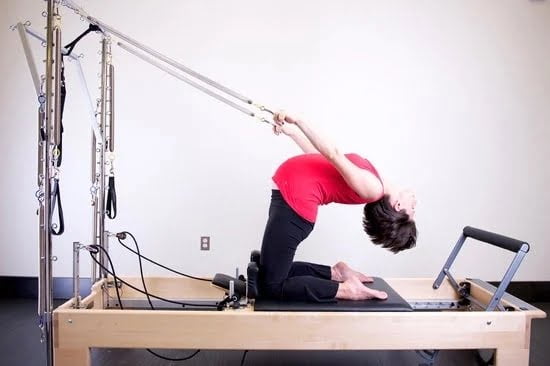Introduction
Personal Trainer At Home Jobs are those jobs where a personally-trained fitness professional works with individuals from the comfort of their own home. This type of job enables people to work in the comfort of their own living space and set their own hours, allowing for more flexible working. Personal Trainers At Home provide tailored gym programmes for clients, including nutrition advice and one-room sessions, designed to get them into shape quickly and efficiently. They may also provide online classes such as yoga, Pilates or boxing lessons to ensure that their client receives an exercise plan that is suitable for them. Additionally, they can also offer lifestyle tips and advice on how to maintain a healthy lifestyle in order to reach any personal goals they might have.
Benefits of Working as a Personal Trainer at Home
Working as a personal trainer at home offers numerous benefits. First and foremost, you have the freedom and independence to design your own schedule and choose who you work with. You are able to get to know each client on an individual level, helping them achieve their health goals with personalized workout programs tailored to their needs. Another benefit of working as a personal trainer at home is that it can be more cost-effective than renting space in a gym or facility, allowing you to offer competitive rates while still generating income. Additionally, there are lower overhead costs associated with working from home, such as not having to commute to an office. Furthermore, you can provide convenient training sessions for clients who don’t have access to conventional gyms or prefer the convenience of training in their own homes. Lastly, working as a personal trainer at home allows you to better connect with your clients and build stronger relationships by being close and accessible which can help build trust and loyalty between you and your clients.
Relevant Education and Certifications Needed
Personal training at home jobs require certain qualifications and certifications to be eligible for employment. Typically, employers will seek out candidates that have completed a course of study in exercise science or an equivalent degree in fitness. Additionally, many states now require personal trainers to hold nationally accredited certifications such as a Personal Trainer Certification from the National Strength and Conditioning Association (NSCA), an American College of Sports Medicine Certified Personal Trainer (ACSM-CPT) or a National Academy of Sports Medicine Certified Personal Trainer (NASM-CPT). Many personal trainers may also choose to become specialized by obtaining additional certifications on subjects such as nutrition and strength training. Depending on the requirements of the employer, applicants may also need to provide evidence of First Aid/CPR/AED certification, Hands On application experience through an internship/shadowing program.
Day-to-Day Tasks of a Personal Trainer at Home
The day-to-day tasks of a personal trainer at home may vary depending on the individual and the goals they are trying to achieve; however, there are some general tasks that any personal trainer could perform. Firstly, they would assess their client’s needs and determine an effective fitness program that can help them reach their fitness goals. This will involve setting specific goals and designing customized plans based on those goals.
Next, the personal trainer will provide guidance and motivation to the client during their workouts in order to maximize results. This includes providing tips to improve technique, introducing modifications to accommodate various skill levels, offering form corrections when needed, as well as providing encouragement throughout workouts. The personal trainer may also develop nutrition plans that encourage healthy eating habits and offer advice on supplements or other lifestyle changes which can positively impact long-term health outcomes. After each session the personal trainer should go over progress with clients in order for them track progress throughout their training period. It is important for a personal trainer to be able to adapt their plans so it remains engaging and challenging for the client. Finally, a personal trainer should prioritize client safety by understanding first aid basics in case of any emergencies while exercising at home.
Managing Home Gym Space for Personal Training
Managing home gym space for personal training can be a rewarding experience for both trainers and clients alike. For the trainer, there are many benefits to taking on this job. Firstly, it allows the trainer to control their own working environment and makes them responsible for their own success. Working from home, a trainer has more freedom to set prices and choose clients, enabling them to make more money than they could if only working in traditional gyms. Secondly, with all of the necessary gym equipment readily available, trainers can create customized workouts tailored specifically to each client’s goals and abilities. Finally, personal training at home allows trainers to appreciate their clients in an intimate setting that traditional gyms cannot replicate.
For the client, having a personal trainer at home allows them to receive professional instruction without needing to leave the comfort of their own home. Trainers can offer detailed advice on nutrition, physical exercises tailored towards improving specific body parts and flexible scheduling options; all elements difficult (if not impossible) without home visits by a certified personal Trainer. Additionally, regular check-ins by a trusted professional help motivate and encourage paying customers during times when motivation may already be low after a tough workout session or challenging nutrition plan. Taking on a Personal Training job from your home also offers other unforeseen bonuses: you don’t have any travel costs associated with getting from one gym session to another or worry about large overcrowded classes and long wait times during peak hours!
Networking and Promoting Yourself as a Personal Trainer at Home
If you want to become a successful personal trainer at home, it is critical to make sure your name and services are known throughout your local community. There are several strategies that you can adopt to network and promote yourself as a personal trainer at home.
One of the most effective strategies is attending public events such as health and fitness expos or networking mixers. These events provide an excellent opportunity to meet potential new clients by introducing them to your services as a personal trainer and handing out business cards. Additionally, consider joining local gyms and fitness centers as a promotional partner. This allows you to promote yourself through their existing network of active members, who may be interested in achieving their fitness goals via private training sessions with you. You can also make use of various social media platforms such as LinkedIn, Facebook, Twitter, and Instagram to further market your services to your prospective consumers. Creating content marketing pieces that convey the value of using personal trainers at home is key for success on these social channels too. Finally, set up an official website for your personal training services that outlines all the information about what makes you stand out from the competition, such as features/benefits associated with choosing your professional services. Always ensure that customers have access to customer testimonials directing them straight to your website which acts both as a portfolio piece for potential prospects and a lead-generating tool for existing customers who refer others.
Staying Organized and Efficient while Working Remotely
Working remotely as a personal trainer can present some challenges in terms of staying organized and efficient. It is important to have a dedicated space where you can conduct your online training sessions without distractions or any other disruptions. This may require setting up an office space with the necessary equipment, such as a laptop, printer, and any other needed materials. Additionally, it would be beneficial to create an effective schedule that outlines when you will be running sessions and how long each session should last so that you stay on track and organized. Keeping track of client data is also essential for ensuring accuracy in billing, tracking progress over time, and maintaining appropriate records. Additionally, having clear communication policies between yourself as the trainer and clients will save time in the long run by diminishing unnecessary back-and-forth emails or texts. Lastly, outsourcing any administrative tasks to someone else can help free up time so that you can focus on more pressing matters while still providing quality service to your clients.
Strategies to Optimize Your Career as a Personal Trainer at Home
1. Network: Reach out to potential clients by expanding your network and connecting with others in the fitness industry. Consider attending fitness training conferences, joining online fitness-related forums, and introducing yourself to local gyms and health facilities.
2. Create a Website: Building a website is an effective way to market yourself and attract new clients. Include information such as your certification, areas of specialization, contact information and services you offer. Be sure to include a portfolio of pictures showing examples of clients you’ve worked with as well as before and after shots.
3. Boost Your Skills: Stay ahead of current trends in physical fitness by taking courses or attending continuing education programs offered by fitness organizations or universities. This will help ensure that you stay up-to-date on everything from nutrition and exercise techniques to anatomy and physiology.
4. Establish Your Rates: Once you’ve built your client base, consider setting competitive rates for your services based on comparable market standards in the area where you are located, as well as the number of years of experience you have in the profession
Leveraging Technology to Enhance Your Business
Personal Trainer at Home jobs have become increasingly popular in recent years as technology continues to revolutionize the way we work and stay in shape. With the rise of mobile apps, it has never been easier for personal trainers to set up their own businesses. One way many personal trainers are leveraging technology to enhance their business is through virtual training sessions. With virtual training, clients can receive tailored instruction from a professional in the comfort of their own home. Virtual sessions are becoming increasingly popular due to the convenience They offer both clients and personal trainers alike. Additionally, with the use of video conferencing apps and streaming services, such as Zoom or Google Hangouts, trainers can run group classes with multiple participants from different locations. This allows them to reach a larger audience while simultaneously cutting down on costs associated with travel and meeting venues. Technology can also be used to manage bookings/schedules, design custom programs and track performance metrics which can help provide data-driven feedback for clients and help them stay motivated.
Conclusion
Personal Training at Home Pros
1. Convenience: With personal training at home, you can get the same quality of workout and instructions as you would from a traditional setting with the benefit of not having to leave your house. This is especially helpful for those who live in remote or rural areas, or those who don’t have access to fitness centers.
2. Cost-Effective: Personal training at home is typically cheaper than working with a personal trainer in a gym because there is no need to rent a facility or equipment and pay additional fees. You will save money by eliminating travel costs, since you’ll be able to work out in the comfort of your own home.
3. Private Sessions: Working with a personal trainer can provide an intense experience that is tailored to fit your needs; most trainers will design their workouts specifically around the goals and abilities of their clients, making sure they get the best results possible. Additionally, you’ll get undivided attention during sessions—no worrying about other gym-goers distractions or time limits.
Personal Training at Home Cons
1. Lack of Equiment: Depending on what kind of exercises you want to do, there may not be enough equipment for it in your home session if compared to going to a gym where multiple pieces are readily available to use and modify exercises.
2. Loneliness: As convenient as it might sound, some people prefer having company when doing physical activities as it helps them keep motivated throughout the session which may not be available when working from home alone with a personal trainer remotely .
3. Inability To Correct Form: Your form can quickly become incorrect when not closely monitored by an experienced instructor which can lead serious injury especially when performing unfamiliar movements with heavy loads so having physical feedback rather than verbal instructions could have quicker and better results in this regard

Passionate about providing useful information to anyone with an interest in the field of Personal Training, I strive to pass on to our readers quality information and to answer any questions about Personal Trainers, the work they do and how to become one.





